
Duration: 11 Days
Passes covered:
KhardungLa – 18,000 ft
ChangLa – 17,688 ft
Rohtang Pass (16,051 ft)
Lachung La(16,600 ft)
Baralacha la ( 16,000 ft)
Zojila pass (11,500ft)
Tour Difficulty on scale of 1 to 10: 5
Suitable For: Couples, Families, Friends, Kids (7+)
Experience: Earlier Biking Experience recommended, first time bikers with knowledge of the vehicle can also apply, anyone can opt for a seat in a SUV.
Nearest Airport: Kullu-Manali airport ( KUU ) in Bhuntar in Manali. Sheikh ul Alam Airport (SXR) in Srinagar.
Best Season to visit:
Summer – May, June
Autumn – Aug, September, October
Stay: Hotels/Homestays/Camps
Regions covered: Himachal Pradesh, Ladakh, Jammu and Kashmir
Duration: 10 Nights 11 Days
Approx Kilometres: 1500
Who can participate:
Families, Friends, Solo travellers.
People with good stamina and fitness level who can adjust to changing atmosphere’s.
Your dream trip to Ladakh is finally coming true with this circuit exploring some of the world’s highest motorable passes, mighty snow capped mountains, deep valleys, serene lakes and the Tibetan culture of the place. Ride through the spectacular beauty of destinations like Solang Valley, Gata Loops, Zojila pass, Turtuk, Pangong, Sangam, Drass, Dal Lake and much more.
Upon arrival in Manali, check-in the hotel and rest for a while. The rest of the day is at leisure to explore the beautiful town of Manali. You can stroll around the mall road, shop souvenirs or go cafe hopping. In the evening, gather for a short briefing by the trip captain regarding various safety measures, riding tips, and more. Dinner and overnight stay at the hotel.
After a hearty breakfast, we kickstart the dream ride with Sarchu. Travel through the famous Atal Tunnel, one of the longest underground highways in the world. ‘At the end of the tunnel’ witness the quaint towns of Sissu and Keylong. As we move ahead, you will be mesmerised with the beauty of Deepak Tal, a reflecting mirror for the nearby mountains. Followed by the Suraj Tal, meaning the sun of god. Next stop will be the Baralacha Pass at 16,000ft. Offering a combined view of 3 valleys. Post a series of hairpin bends, we reach Sarchu. Dinner and overnight stay at the campsite. Stay hydrated!
After a delicious breakfast, we start our ride to Leh with the views of barren land. Enjoy the adventurous ride through 21 hairpin bends also known as the Gata Loops, that takes you to one of highest motorable passes in the Ladakh region - NakeeLa Pass. Follows another high mountain pass, Lachung La Pass. Stopover at More Plains for some picturesque views. Upon reaching Leh, rest for sometime. Overnight stay and dinner at the hotel.
Begin your day with a delicious breakfast at the hotel and gear up to explore Leh on your bikes. Today we have a day excursion exploring Shanti Stupa, built to promote peace and prosperity marking 2500 years of Buddhism,and Leh palace, built in the 17th century that will give you an insight about the golden era of Leh. Both of them are situated at wonderful locations giving a ravishing view of the Leh city.
In the evening you can explore the Leh market that has a variety of things to offer to shop from - souvenirs, clothes, dry fruits and more. Later, head back to the hotel for dinner and overnight stay.
After breakfast, checkout from our Leh Hotel and gear up as today, we ride past the highest accessible motorable pass in the world - Khardungla at 18,380 ft to Nubra Valley. On your way witness the change of landscape from deep valleys, flowing rivers and white sand desert as we proceed on this route. A short stopover at the enchanting Diskit Monastery followed by exploring the white sand dunes of Nubra or a short camel ride here on the double humped Bactrian camel, found exclusively in Ladakh. Later, head to the campsite to enjoy a bonfire under the stars.
Get ready to explore the unexplored, post breakfast, as we ride our bikes towards Turtuk. Turtuk, the last village before the LOC ( Line Of Control ). Turtuk was under Pakistani control until 1971 after which India gained control of this area. On the way, we witness the very beautiful Shyok Valley. After exploring the best of Turtuk we ride back towards Nubra. Dinner and overnight stay at the campsite in Nubra
After a hearty breakfast, we checkout from the campsite as we head for Pangong lake. The world’s highest saline water lake, spending some quality time at the Pangong lake, will feel like a Bollywood moment. We take the unexplored and untouched Shyok village route. famous for its waterfalls, and the beautiful scenic view. Upon spending some tranquil moments at the lake, and capturing memories, we head to campsite for dinner and overnight stay.
Soak in the view of the beautiful Pangong lake, as we ride back to Leh post breakfast crossing the Changla Pass at 17,350 ft (third Highest Motorable road in the world). The ride will leave you mesmerised with the amazing views and mind-blowing landscapes. Visit the Thiksey monastery on the way, the largest gompa in Central Ladakh. We head to our hotel in Leh for a delicious dinner and overnight stay.
After breakfast, leave for Kargil. Today’s day is packed with exploring one of the most famous sightseeings in this region. Starting with the Sham Valley, covering the following:
● Hall of Fame to learn everything about Indo-Pak wars and martyrs
● Gurudwara Pathar Sahib, to enjoy a delicious langar while coming back to Leh.
● Magnetic Hill to witness a unique phenomena of vehicles sliding uphill
● Zanskar, the confluence of rivers, also the world’s highest river rafting point.
As we move ahead towards Alchi, visit Lamayuru, one of the oldest Monasteries of Ladakh and enjoy the view of Moon Landscape. On our way towards Kargil, see the Mulbekh, a giant Buddha sculpture on a rock mountain. After covering everything, we reach Kargil. Rest of the day at leisure to spend time at the hotel. Dinner and overnight stay in Kargil.
To proceed towards Sonmarg, post breakfast. This stretch would be the last day for riding the bike across these mountains, make the most of it. Enroute, we will cross the famous Drass village (2nd coldest inhabited place in the world) to witness the magnificent view of some of the peaks from Kargil war (Tiger, Tololing). We take a small stopover at the Kargil War memorial to pay homage to the martyrs of the war. Passing through the beautiful Zojila pass we reach Sonamarg by evening. Dinner and overnight stay in Kargil.
We bid farewell to this wonderful trip while we proceed towards the Srinagar airport ( SXR ) via a bus/cab. A great end to your dream bike trip, with views of the lush green Kashmir valley and the famous Dal Lake. Plus a bag full of happy memories and stories for a lifetime!
In case of unforeseen weather conditions or government restrictions, certain activities may be cancelled or change of dates might happen, and in such cases the operator will try his best to provide an alternate feasible activity. However no refund will be provided for the same.
● 30 days before the date of travel: 25% of the total package cost will be charged towards cancellation fees.
● 15 to 30 days before the date of travel: 50% of the total package cost will be charged towards cancellation fees.
● 0 to 15 days before the date of travel: 100% of the total package cost will be charged towards cancellation fees.
Rescheduling Policy
Any rescheduling of trip dates, postpone or prepone due to any valid reason can be done only 15 days or more prior to the tour date confirmed at the time of booking.
No rescheduling will be considered if a confirmed tour starts in less than 15 days.
Child Policy
Children below 5 years of age are not allowed on the trip due to high risk in this region.
General Policy
In case of changes in itinerary:
● Cost to be borne by the client directly in case of change in itinerary/hotels or guests due to natural calamity, road blocks, or any other valid reason beyond our control .
● Change in itinerary due to reasons out of our control like - political disturbances, natural phenomenon, change in flight/train/bus schedules, cancellation of flights,trains/bus will not be adjusted in the package cost. No bill will be reimbursed for the same for any missed service/facility.
● No refund if due to a natural or personal reason, the tour or a particular activity is missed,
● We reserved the right to change the itinerary due to any unforeseen circumstance - weather /political condition etc without compromising on the service.
● Vehicle for airport pick and drop subject to availability
● Covid Guidelines ( including RTPCR test ) to be followed as per respective Government guidelines.
● All hotels/campsites are subject to availability. In case of unavailability, similar category property will be provided.
● If due to any reason, a traveller wants to leave the trip midway, all the related expenses to be borne by the traveller itself. We will not be responsible for any such decisions or refund.
Food Provided:
Hotels/Campsites at every location provide Indian vegetarian food where meals will usually consist of Indian bread, vegetable, lentils, salad, and rice. Non vegetarian/ eggs only as per discretion of the hotel/campsite as per availability.
Active mobile network:
Only postpaid ( Jio, Airtel, BSNL ) around this region
Baggage limit:
1 bag ( rucksack ) per member not more than 15 kgs.
Medical
Suggested to take ample time to get acclimated due to high altitude in the region
Do consult a physician before your tour and it is advisable to carry basic medicines and first aid kit during the tour.
25000+ Pictures and Reviews on the platform.
We have a minimum price guarantee. If you get the same product at cheaper price we will refund the difference.
We have activities across 17 countries, across every category so that you never miss best things to do anywhere.
We are always able to support you so that you have a hassle free experience.
When to come?
Ladakh is open for tourists throughout the year, while the best period for the cultural tour is between April and October ending. For adventure tours June to October is the suitable period. Most of the trekking routes are closed after November due to snow at high passes except the Liker to Khaltsey trek. The best period for Chadar-trek (frozen river trek) to Zanskar is from January to mid-March.
The festivals of Stok, Matho and New Year take place in winter and it is possible to visit monasteries in winters. There are few hotels and guest houses with heating facilities in Leh that provide accommodation in winter.
Getting Acquainted: Ladakh is spread over an area of 97,000 Sq. Kms and lies on an average of 3500 meters above the sea level. Ladakh has a population of around 1,70,000.
Climate: Temperature in summer (June to September) can touch 35 c and minus 30 c in late December and January. Annual rainfall is 6’’
Visa and Permit: Tourist can reach Leh with normal Indian tourist visa and does not require any special visa or permit. However, the foreign tourists are required to register themselves at Drass, Rumtse and Sarchu if they are travelling by road. Those travelling by air get themselves registered at the airport. The tourist, both foreign and domestic are required to get permit for restricted areas like Tsomoriri, Tsokar, Pangong Lakes, Dhahanu and Nubra Valley, Which can obtained through registered travel agencies.
Currency, Money Exchange & credit Card: The local currency is Indian Rupees. There are authorized agencies for money exchange for USD or Euro traveler cheque and cash. You should insist for a receipt, which will help you in reconverting the money whenever you desire. Credit Cards are accepted by major Travel Agents, hotels and antique shops on paying 2.5% service charge.
Time difference: The Indian Standard time (IST) is as per the calculation done in the Allahabad city. IST is 5 hours and 30 minutes ahead of London, 4 hours and 30 minutes ahead of Paris and about 10 hours and 30 minutes behind the New York City.
How to Reach?
The Air india, Jet airways, go air, vistra etc operate New Delhi to Leh,Srinagar to Leh, Jammu to Leh, Chandigarh to Leh and also Mumbai to Leh.
Road: The Srinagar Leh road remains open from early April to December. And the Manali-Leh road remains open from early June to mid–November
What To Bring
Clothing: The temperature in mid summer is pleasant requiring T-shirt and shorts in the daytime but in evening temperature drips and you need jacket or pullover. While trekking above 4000m, you need warm cloths. Sometimes there is rain or snow in early June and August. Therefore, you need wind sheeter or raincoat.
Shoes: Good waterproof shoes are needed while trekking and extra Pair of shoes or slippers is useful while crossing the rivers.
Ruck Sack:Two ruck sacks are needed. One small handbag for your camera, water bottle, pack lunch and a space for jacket. Bigger one to carrying clothes with extra layer to be safe from rain and dust. Sleeping Bag: Summer sleeping bag is enough if you are travelling between mid June to mid September and warm winter sleeping bag is required if you are travelling between mid September to mid June. You can also rent very good sleeping bags from trekking companies in Leh.
Avoid Acute Mountain Sickness: Acute mountain sickness can occur to any one at an altitude above 10,000 ft. above sea level, therefore, make it sure to take complete rest on the day of arrival.
Accommodation: There are hundreds of family run hotel and Guest Houses in Leh to suit every pocket.
Food: All the hotel and restaurants serve Local Ladakhi, Tibetan, Indian, Chinese, Italian and continental cuisines.
Street Hawkers: Generally there are no street hawkers in Leh Town, but at time you might come across people in the street trying to lure you to their shops. You should discourage such practices, it may cause inconvenience to you later.
Telecommunication facility: Telephone & Fax facilities are available in Leh, Padum, Kargil and Nubra Valley.
Postal Service: Foreign airmail rate is Rs 15 for a letter,which is not exceeding 20 grams in weight for Australia,Japan,Europe and America .For aerogramme Rs 8.50 and Post Card Rs 8/-.
Internet Service: Internet and e-mail services are available in the Leh town.
Clicking portraits of interesting people: it would be advisable to ask before clicking a picture of individual or even group of people. However, a tourist should refuse to give money if asked for.
Drinking Water: It would be convenient to carry a water purification set with you on a trek. It is even safe to use boiled fresh water during the trek.The Dzomsa Laundry in the main market sell high pressure boiled water for Rs 7 per liter. You can bring your water bottle or container to get it filled with the chemical-free safe drinking water at the Dzomsa Laundry.
Plastic Bags: Ladakh is perhaps the only region in India where the use of plastic bag is officially banned. So, the plastic carry bags that you see in other parts of India are not seen in Leh. However, market goods in readymade plastics packages are there. A trekker should ensure that the biodegradable camping wastes are buried properly and burn the non biodegradable ones before they move further.
National Park: All the trekking routes fall under the sensitive wildlife habitat area including the Hemis National Park. In fact Ladakh is a place where villages are part of the vast wilderness that harbours rich but sparse wildlife. Some of the species are even endangered ones. Therefore, one should be extremely careful about not causing any disturbance to the vulnerable wildlife habitat while on trek.
Hiring Taxi from outside Leh: Hired taxis from outside Ladakh are not allowed to be used for local sightseeing and jeep-safari. You can book the non-local taxis only to drop you at Leh or for your return trip while leaving Ladakh. You have to hire local taxis for local sightseeing and jeep safaris. However, there is no restriction for those traveling in their own private cars.
Ladakh experiences considerable fluctuations in the day and night temperatures, even during the summer. While the days are pretty warm, sometimes even hot due to the effect of the rugged topography, the evenings can become chilly, requiring additional clothing. It is, therefore, advisable to keep a pullover and / or an anorak or jacket handy. Sturdy walking shoes with strong rubber / synthetic soles for grip, cotton socks (woolen for late autumn tours besides and trekking trips are some of the other items required for the trip.
Following is a list of some recommendations for your Ladakh visit (you can download here the Ladakh Trip Advisory for your ready reference):
Dress / Equipment
Comfortable trousers, preferably of warm material (cotton or wool mix) and / or Jeans.
Thermal undergarments & sweat shirts / warm shirts for trips during April - May & from Mid September onwards).
A full-sleeved pullover as well as a half sleeved sweeter (for use during warm days).
Wind proof outer wear / jacket / parka, sun hat and a pair of good quality sunglasses with sufficient filter-factor to check the sun's ultraviolet rays.
A cap or balaclava (for use when the weather turns bad especially for trips to the higher places such as Pangong Lake, Tsomo-riri, Khadongla and the Manali-Leh road journeys.
Comfortable walking shoes/sneakers with thick cotton socks (avoid fancy shoes/sandals).
For ladies : Trousers or Shalwar suite (worn over thermal inner or tights during April through May & from September onwards only), woolen sweaters / cardigans, a windproof jacket or a shawl, walking shoes with comfortable soles / sneakers. (Avoid Saris & Sandals).
It is also suggested to carry a flashlight on the tour, especially for those spending nights outside Leh town such as Pangong Lake, Tsomoriri Lake, Nubra Valley and on trekking trips.
Miscellaneous
All essential medicines, including those prescribed by personal physician (if any)
Sun screen, lip- salve, moisturizers, antiseptic creams, etc.
Medicines for altitude sickness, if required.
Acclimatization
If you are traveling to Leh by air, you must take complete rest for a day for adjustment to the high altitude and low oxygen level of Ladakh. High altitude sickness or Acute Mountain Sickness (AMS) is a risky condition faced by tourists who do not allow sufficient time for acclimatization upon reaching Leh.
The most common symptoms of altitude sickness are breathlessness, coughing, disturbed sleep, headache, inability to concentrate; lassitude, loss of appetite, nausea etc. Following precautions are recommended to avoid being affected by high altitude problems:
Take complete rest at least for a day after arrival;
Move about slowly and breathe deeply till your body becomes used to the high altitude and low level of oxygen.
Take plenty of fluid.
Important – It's generally suggested that one Diamox tablet per day should be taken for 2- 3 days prior to your departure for Leh by air, and continue it within Ladakh for a day or two, if required, to overcome the effect of high altitude.
However, you MUST consult your doctor and confirm if you can take diuretic medicines like Diamox.
Remember : You might feel ‘ normal ' upon landing at Leh, but that's an illusion which needs to be ignored because the effect of the altitude and low oxygen level hits you slowly. It is important that you do not exert yourself on the first couple of days after reaching Leh, as your body needs time to acclimatize. Visa and Permit : Foreign Tourists can visit Ladakh on a normal Indian tourist visa and no special visa or permit is required to visit Ladakh. However, all tourists to Ladakh, whether domestic or foreigner, are required to obtain Protected Area Permit / Inner-line Permit from the Deputy Commissioner Leh's office for visiting the restricted areas like Tsomoriri, Tsokar, Pangong Lakes, Dah-Hanou and the Nubra Valley. The services of a registered travel agency should be taken to get these permits.
Credit Card / Cash : For purchase of commodities or services or souvenirs cash is generally sought as Credit Card charging is not common and is uncertain due to frequent connectivity problems.
ATM : State Bank of India & J&K Bank has ATM points in Leh & Kargil town. Punjab National Bank operates an ATM point in Leh. These remain mostly crowded with long queues. Sometimes they even run out of cash.
Mobile Phone Service : Mobile phones with post-paid connection of BSNL are operational in most parts of Ladakh. In Leh Town area postpaid connections of Airtel & Vodafone Networks also work fairly well.
ID Card / ID Proof : Remember to carry a valid photo ID Card with you. This will be useful for a variety of purposes – identification at checkpoint, getting Restricted/ Protected Area Permits, Check-in at airports / hotels etc.
Useful Tips : In Ladakh, you will find a culture in rapid transition, yet one in which the traditional values are still largely intact. In order to make your visit to Ladakh more pleasant, both for yourself and for the host community, following steps / precautions may be helpful.
Dress Code : Please avoid wearing shorts and sleeveless shirts, blouses, tops, undershirts etc. in public and especially in monasteries, mosques, temples, gurudhwaras, and churches. The same holds true on the trekking routes. While short clothing is acceptable in camp-sites away from human habitation, they should be changed for trousers, slacks and blouses in villages where you might stop. Under no event should swimwear (and for women bikini tops) be worn in public as these may be taken as sexually provocative and be a cause of possible harassment.
Behaviour Code : Please keep your affection for your partner as a private matter and confined to your own rooms or tents, but not for public display, on the street, in religious buildings, in restaurants or at public events.
Photography : Please do not take photographs of local people without seeking permission, nor of, or within, any religious building and of any religious ceremony, without permission of the official in-charge of the concerned religious place. Remember that the intense light of flash photography is damaging to ancient wall paintings and tapestries placed in the monasteries.
Back pack (50-60 ltr) with rain cover, comfortable and adjustable shoulder straps. 1 ltr refillable water bottle for enough hydration throughout the trip/ At least one thermos flask is recommended. 1 personal medical kit after consultation with your doctor. Energy bars, healthy snacks, dry fruits, electral/ORS. 2 full sleeves non cotton t-shirts
1 fleece t-shirt
1 fleece jacket or a woollen sweater
1 down feather jacket
1 pair thermal inners (upper and lower)
1 pair waterproof gloves
1 pair woollen gloves
SPF 50 Sunscreen
Moisturising cream
Toilet paper/wipes
Mosquito and insect repellent
SPF 30 Lip Balm
Hand Sanitizer + disposable masks
Toothbrush and Toothpaste
Towel (Quick Dry)
1 Cap
1 head torch
1 woollen cap
1 normal cap
UV protective sunglasses/ contact lenses and photochromic glasses with people who wear spectacles.
Foot Gears
1 pair trekking shoes (waterproof, high ankle with good grip)
1 pair comfortable shoes of your choice (floaters, flip-flops)
Cotton socks (4-5 pairs or more) according to the duration of your trip
Woollen socks (2-3 pairs or more) according to the duration of your trip
A copy of Driving License/VoterID/Aadhar Card
Any one original document
2 passport size photos
Note: (Driving licence mandatory if you are driving/riding on the tour)
"It was wonderfull experience."
 Simran
Simran
It was an amazing experience to be on Chadar with Geographic Tours. Every arrangements was good.We all friends appreciate the quality they manitained in such tough Situations . Looking forward for many more experiences. Thanks alott G.T
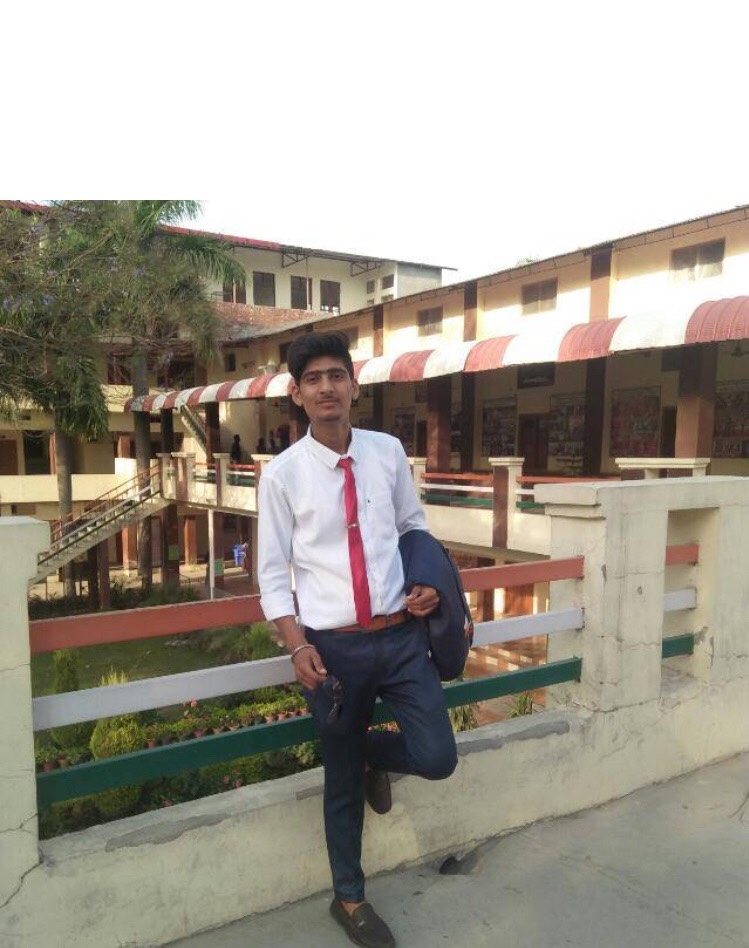 Mr. Vikas Jhah
Mr. Vikas Jhah
I would like to thank Mr. Salamat for designing such a wonderful trip to Manali. It was a great and well-arranged trip. This was the best travel agent experience I have ever had. We never had to worry or think about what we were doing next, or how we were going to do it, or how the quality would be, when you were involved. It was completely stress free tour for us. Thank you again for making my trip so enjoyable.
 Mr. Virender Kumar
Mr. Virender Kumar
I wanted to thank you very much for planning the tour of Ladakh for me and my wife. It was amazing and exceeded my expectations! We had a wonderful time their. Will look forward to work with you on our next Tour/Trip as well !
 Mr. Sushil Kumar
Mr. Sushil Kumar
Thank you Geographic Tours we have a awesome experience with you guys. Everything was good the camps ,trek leaders , hospitality , views ,food etc.Hope to be back with you again.
 Mr. Pasrija
Mr. Pasrija
Challenging trek which i did so far.This experience was absolutely brilliant. Tough time i had to convince my friends but we all had fun. Loved it .Hope to be back with you soon.
 Sana Aggarwal
Sana Aggarwal
Ladakh and its beauty is incredible. Being at the highest motorable pass i.e. Khardung-La. also climbing at the peak after a struggle, really makes you realise how small and insignificant you really are! Trek is beautiful. We have a great Experience.
 Anjum Rana
Anjum Rana
Just wanted to say thank you for your great work in booking our trip to Srianagr to Leh to Manali. We thoroughly enjoyed ourselves. All the arrangements and transfers worked like clockwork, I appreciate your efforts in making this happen.Everything well arranged, porters, guides everything was good. from hot water, hot food, medical kits , neat and clean sleeping bags everything was good..
 Vaishali Sharma
Vaishali Sharma
Me and my freinds enjoyed teh experience and the service.Without the supoort we might have collapsed. Thank you for helping make our once in a lifetime family trip something everyone will remember with affection.
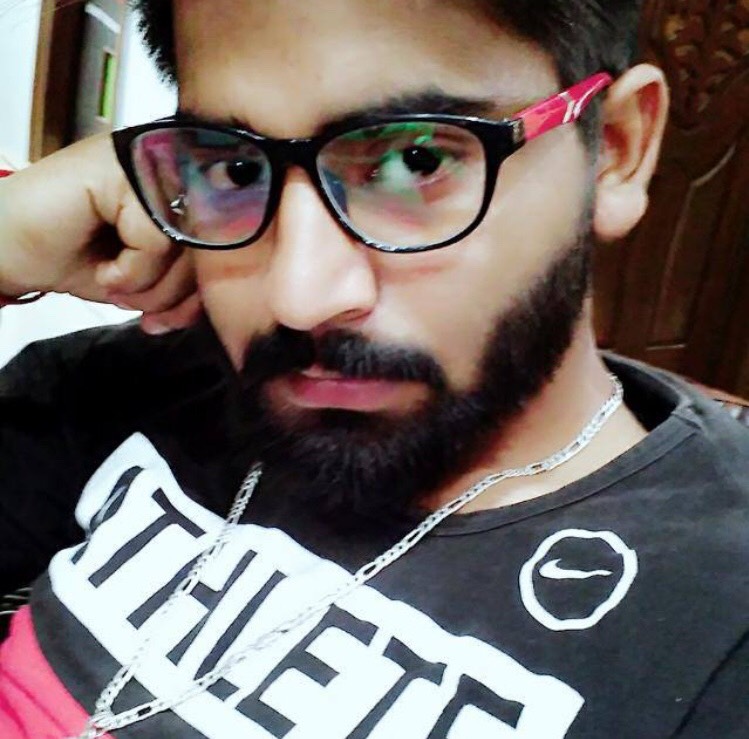 Mr. Sachin Patil
Mr. Sachin Patil
Must appreciate the efforts of the entire team for the smooth process.Thanks to Geographic Tours for all support.
Mr. Salamat , just wanted to say a big thank you from both of us. You have been extremely helpful, cooperative and responsive. Thanks to the trek leaders and the organisers for making sure that everything went through smoothly.
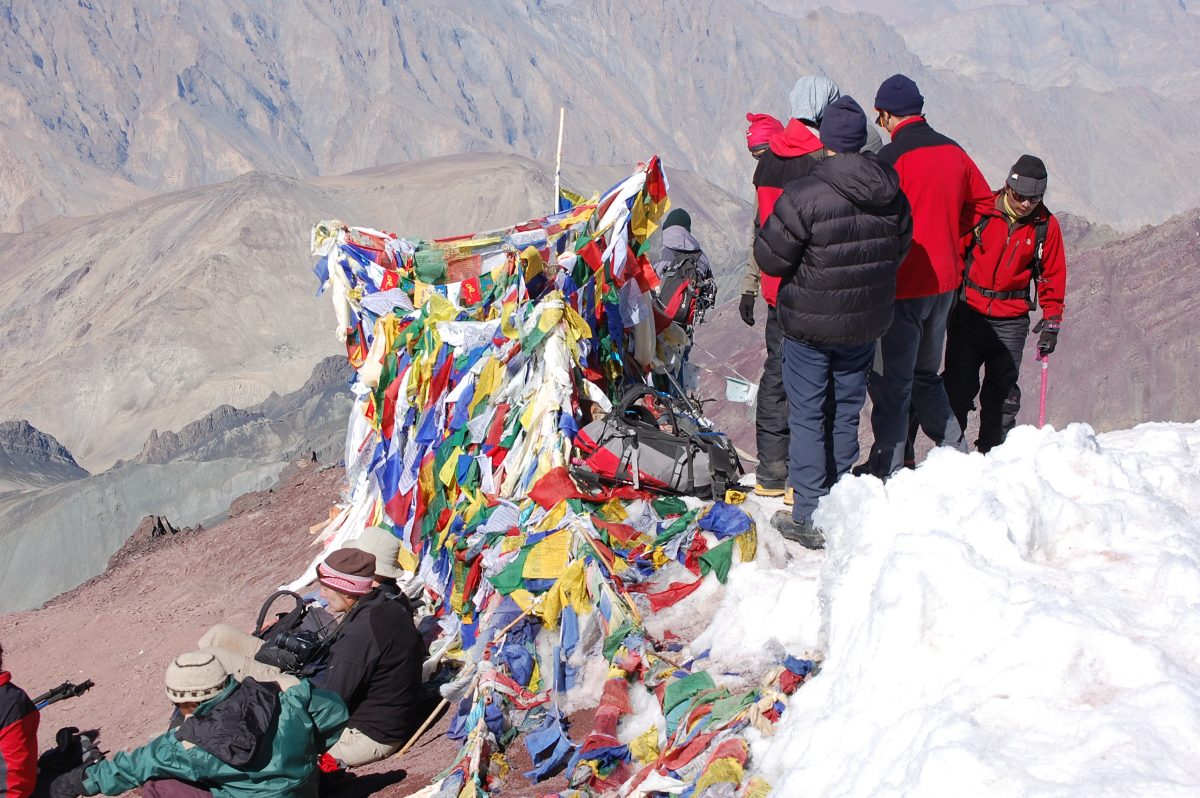 Mr. Vishal Kolhi
Mr. Vishal Kolhi
I did Stok Kangri trek with Geographic Tour and my experience was outstanding. The trek guide, leader and entire support team was extremely helpful. I successfully summit the mountain, a great thanks to Geographic Team.
It has been really nice interacting with you and we had a very comfortable and safe journey on the trip to Srinagar. The accomodation was very good and the transportation facility was excellent. Kudos to the Geographic Tours team for making it a memorable trip.
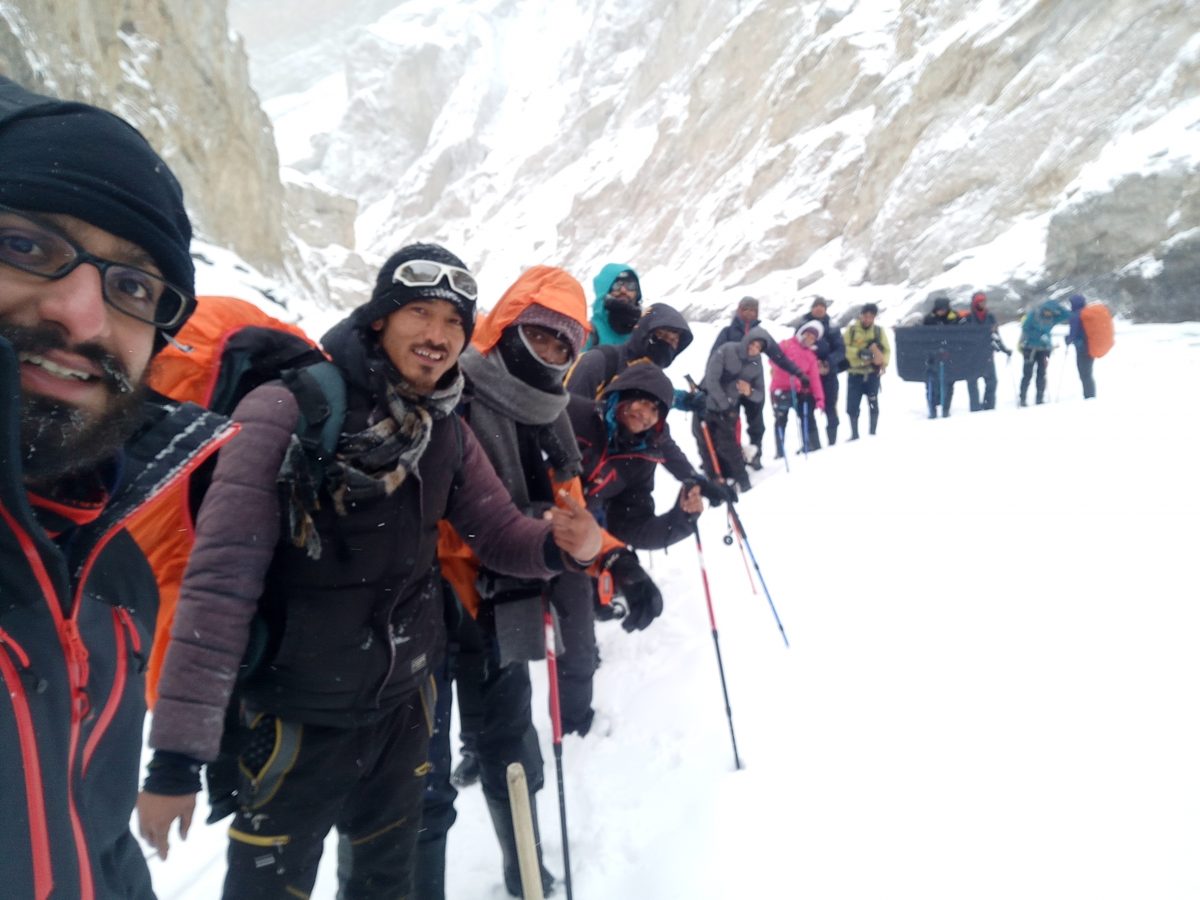 Akshit Raina
Akshit Raina
Our camping and trekking experience at Stok Kangri was really delight and as professional trekkers , it did not pose a major challenge for us and we want to keep participating in activities and treks like this, despite the difficulty level ! Thank you and cannot wait to plan our next family adventure.
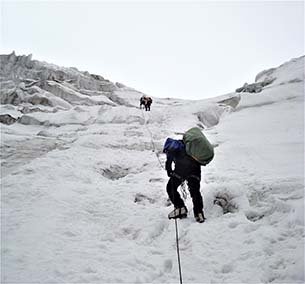 Mr. Sumit Sexena
Mr. Sumit Sexena
The Chadar Trek arranged was fantastic and trouble-free. Outstanding experience, well-arranged services, cooperative staff and beautiful memories! A trek to be remember always. I once again thank you for giving us your nice service.
Thanks for organising such a wonderful trip. We had the best time of our lives and the memories are going to stay in our hearts forever. Hotels were all very good and the pick and drop facility excellent. Food quality was little low but it was ok. I hope next time this will improve. Other things was quite good. We have really enjoyed the time. Keep up the good work !
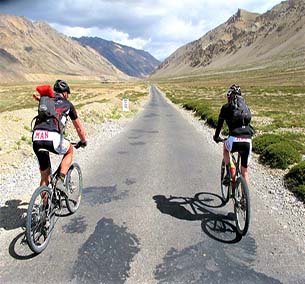 Mr. Om Prakash Singh
Mr. Om Prakash Singh
The entire tour package turned out to be good. The hotel accommodation provided in Leh and Manali was good. Even the shopping areas Mall Road, Leh Market were near to the hotel. The travel guide where pretty much on time and covered most of the locations. In all the trip was good.
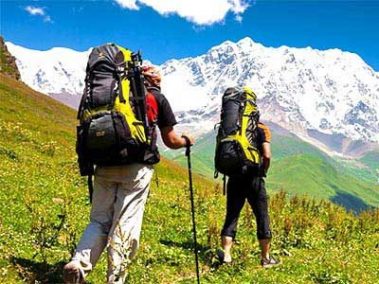 Mr. & Mrs. Dhawal
Mr. & Mrs. Dhawal
I would really like to thank you and your complete team for a wonderful honeymoon in LadakhThanks to Geographc Tours for their support & warm treatment. We Really enjoyed.
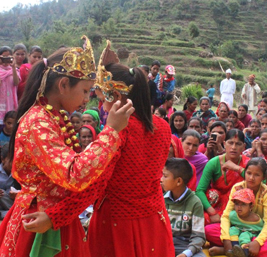 Mr. Ankur Randhawa
Mr. Ankur Randhawa
I just completed my tour of Leh-Manali arranged by you guys. The tour was very successful and I enjoyed it completely. Let me add that this was possible due to all help provided by youI appreciate your way of dealing with clients. Thanks again.
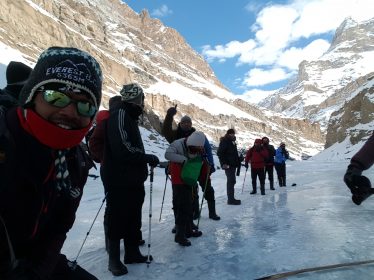 Mr. Abhijeet Jamwal
Mr. Abhijeet Jamwal
Hope to come back to Geographic Tours for future travel trips.
We enjoyed a lot. Once again, thanks a lot for your efforts and suggestions. I will recommend Geographic Tours to my Friends .
Hey this is hardik from Banglore. Well organized trek. Trek leaders were too good. All the porters and kitchen staff were really amazing. You can improve on better Guest House and Running hot water Faclity. Overall the experience was amazing as Chadar is a very beautiful place.
Thank you Guys. No complaints during my trip. Lovely group.
Hey guys wats up ? This is Ron from France. Recently I had done Chadr Trek with you. Each leg, each touch point, each adventure, felt like you and Fantastica planned it with care about our needs and expectations. Sometimes exceeding our expectations. Our hotels would be clean and accommodating, and that we had been guided by someone who knew the area, and had really listened to us. Thanks alott Geographic Tours for such a awesome and memorable Trek.
I am Annie from Mumbai. I have done Chadar Trek with you guys with my 3 Friends. We all appreciate your work , all the arrangements were superb. Thank you for helping make our once in a lifetime Friends trip something everyone will remember.
We were so satisfied with our tour of Ladakh, that we recommend to all of our friends and family to go with your Company for a memorable time.
Thank you, thank you so much for all your pre-planning and checking on everything for us, before, during and after this amazing adventure trip to Ladakh! We had a wonderful time and loved every minute! We truly appreciate all you did for us, making this trip of a lifetime an outstanding reality!
The fun and excitement of Climbing Stok Kangri, when you start your trip from leh. When reaching the trek base camp the eagerness to reach on top makes you excited and gives you the strength. It was just a beautiful Experience for me. Thanyou for giving us beautiful memories to cherish whole life.
Absolutely outstanding!
Thank you again for making my trip so enjoyable and pleasant . We look forward to Trek with you again.
We had a wonderful time …. I’ll be sure to be in touch if we can manage another trip to Ladakh. Thankyou Geographic Tours.
Just wanted to thank you for putting together a fabulous trip.
Hello Mr. Salamat, We had an absolutely stunning time. We loved the travel with the group around 18 which proved to be a quite compatible crowd. The hotel accommodations were absolutely superb! Thankyou for the memorable and best Trek.
We hope to travel with you once again in the future. Thank you Geographic Tours for creating Memories.
Hey I am Ankit from Bengluru. Me and my friends recently finished chadar Trek with you guys. We had an absolute blast! We’re already discussing another trip back this year. Thanks again 🙂
Just want to thank you so much for planning our first trip to Manali. It couldn’t be any more amazing and the most memorable trip of my life so far. I cannot wait till our next trip! We loved everything about the trip and hotel. Thankyouuuuu…
We had a great time on our vacation. The service, food and staff were excellent. I want to thank you again for all your help with the Kashmir Trip.
Your assistance was very much appreciated. The trip went well. The tours, transfers and breakfast were awesome. Take care and thanks for making our trip dreams come true!
Just wanted to thank you for our trip to Ladakh! My family and I had an unforgettable trip and the accommodations were awesome!
Thank you for giving me the opportunity to experience the Lifetime Trip. Everything and everyone exceeded my highest expectations! Thancxxx alotttt for everthing.
It truly was a trip of a lifetime.
The trip was absolutely amazing! We had such a great time exploring Ladakh. The food was really good. It was well organized, successful and enjoyable travel.
Thank you again for making my trip so enjoyable and pleasant. It was truly fun with you all.
Thanks for always making our vacation arrangements go so smoothly.
This trip is great and the hotel/staff/location is beautiful and magnificent. YOU ARE THE BEST. You did a very great job. Thak you for one of the best Trip.
Not at all expensive and absolutely wonderful. Thnkxx Guys for Everthing
Hey I am Nishant from Delhi. Everything goes along as planned without any problems, the tours are great. I will continue to travel with Geographic Tours and I do recommend them to my friends and family.
What a wonderful experience on this tour! Manali, our guide was outstanding. We would tour with Geographic Tours again without hesitation.
We are so glad that we went and we will do more tours with Geographic Tours in the future.
Our guide Rahim was fantastic and all the accommodations were perfect. I was impressed by the organization throughout. We all learned a lot and really enjoyed the experience.
Most important is that unlike other tour companies, their customer service is the best. Also we always feel safe when traveling with your Company . Thankyou Guys.
We were extremely impressed with you and felt that they really made the trip what it was for us and our whole group. I can’t wait to tell other people about my experiences and look forward to another trip with Geographic Tours.
Our trip was absolutely fantastic. the best hotels, travel guides, buses and meals. Best experience ever. Well done guys!
We are very happy with the entire experience of the tour. Good Job!
Thank you very much for the memorable experience to see Kashmir and Ladakh. Keep up the good work!
I was very pleasantly surprised with the arrangements included on this tour. Thanks !
I would like to personally thank you for have the patience to help me create a trip for 24 individuals.All the inclusions are superb. Thanks
It was wonderful! Thanks a bunch!! We’ll be contacting you again for future Trips/Tours.
I had a wonderful time.
Service, food, room, entertainment and activities were all very nice. We really didn’t want to leave Thank you Again
Thanks for making our trip dreams come true!
Yes we are back from our tour. Had a wonderful time, the services offered by you guys was excellent. Very good team work, hotel accommodations were excellent. Thank you for the wonderful professional services rendered to us. Thankyou!!!
Thank you very very much. We had a wonderful time and everyone appreciated all your arrangements. Of course there always have to be a few points but that is only an observation from all. Thanks once again for all your help.
We are back from a very pleasant trip to Ladakh. The hotel rooms were clean and spacious and the breakfast was superb. I would definitely recommend the hotel to your other clients.
So my experience with you all was really satisfying and it was handled very professionally. And we will for sure come back to you and take advice for next travel trip as and when we plan.
Thank you once again for all the arrangements!
Everyone was helpful and gave us correct guidance. Overall it was perfect and we had a great time.
We had created lot of memories and this was all made possible because of your management and I would surely recommend people to get the trip planned by GT.
Looking forward for more tours in future.
We had so much fun on this trip. Thankyou so mch from me and my wife.
Great thanks to everyone who made this vacation worth remembering.
I am Harinder from Delhi. I must appreciate your professional approach. Thancxxx for all the Things.
On behalf of Mrs Anne and myself I would like to thank you so much for organising and planning the beautiful Ladakh holiday . We had a super time and I must say the manner in which you planned everything was Fab. Thankyou keep the Great work done.
Thanks to you for a job well done. We had a great time catching up with our friends and are now back at work. We have enjoyed ourselves so much that all are now talking about travelling together again with hopefully some more to join next time around.
Thank you so much for the excellent service.
Your follow up and patience are admirable as is your service delivery.
Returned from a lovely tour to Kashmir Ladakh Manali. All your travel arrangements were perfect and efficiently executed and the tour was faultless.
Our thanks for your assistance.
We returned after a nice trip.The journey was very comfortable.Thank you for all the arrangements.
We, along with our families had a wonderful experience during our Manali trip. The trip was very well managed by you and everyone of us enjoyed. Thanks to you and your team for organizing our amazing Trip
We, along with our families had a wonderful experience during our Manali trip. The trip was very well managed by you and everyone of us enjoyed. Thanks to you and your team for organizing our amazing Trip
I and my family would want to thank you and your team on planning such a wonderful customised dream holiday to Ladakh.
Thanks for Everything during or Tour.
Thanks very much for a great service – which helped make our holiday in Srinagar a fantastic experience for us all.
Thank you for your organisation and we appreciated the effort that are made by you. Thankyou to make our trip such a wonderful experience.
You and your company did a terrific job planning and executing our vacation. We look forward to hopefully working with you again soon.
I’m writing to thank you for the well organised trip to Manali. My parents are very happy with the arrangements. I’ll definitely recommend your services to my friends
We were absolutely delighted with our trip to Ladakh; it was so varied and interesting.
So thank you and all your staff for all your hard work in providing us with the holiday of a lifetime!
I wanted to thank you for the excellent trip you arranged for us to Manali and Srinagar. The trip went by without a single snag. It was a wonderful, truly memorable experience for both my husband and me.
Overall both of us were more than satisfied with the trip.
Thanks once again for everything.
I was impressed with the high quality of your products and services on my recent visit to Srinagar which was perfectly arranged by your company.
Extremely Good and Keep It up!
Thank you for a memorable trip…everything was just so perfect 🙂
I am writing to thank you for the exceptional decor, entertainment and ground transportation services you provided. Everything turned out wonderfully!
Wanted to thank you for sorting everything out, all the arrangements ran flawlessly which added to make it a wonderful holiday. Will be back in-touch with you to sort out the next trip!!
The entire stay was lovely. The Hotel , everything was good.
Thanks for the Lovely Trip. We will always remember it. Thanks And Regards.
We look forward to working with you again if another event comes up.
We would certainly recommend your services to friends. You deserve to do well and you offer fabulous services. Thank you for making our trip so memorable
Thank you so much Salamt for the arrangements. We really enjoyed our trip of 5 days to Manali.All the arrangements were perfect and had no problem anywhere during the trip. Very well job done. Thank you!
We have returned from Leh. Thank you very very much, the trip was perfect. All your arrangements were excellent.
Thank you very much for the fantastic trip organised by you and your team , everything was well organised hotels were all good met some intersting people.
Please thank your team who has put their effort together to make the pleasant trip on my behalf. I am looking forward to another trip!!!
Many Thanks for organising my 10 days visit with family to Ladakh and Manali.
Your efficiency is commendable and your levels of service are very high. God bless you and thank you once again.
Thanks once again for everything. Keep up the good work.
The trip went off very well and we thoroughly enjoyed ourselves.
Thank you Guys for such great planning and you guys are our fixed travel agents for life.
Overall we had a great experience and worth all the money and effort put into it. We will never forget this vacation for sure.
Thank you and looking forward to seeing you soon!
Once again, many thanks from all of us and you truly deserve to take a bow!
Everything was well organised and well taken care of and the team has indeed enjoyed itself.
Thanks for a very well arranged trip. Everything went without a hitch, thanks to your perfect arrangements.
You made very intelligent and exceptionally efficient arrangements for us, for which we must thank you.
This is a sincere thanks from me and my family. Thanks once again for everything.
Thanks a lot. I was very happy with all arrangements, everything went off well and we enjoyed our trip to Manali , thoroughly. I will definitely come back to you for more such experiences.
We were lucky to have great weather, which made the trip all the more enjoyable! Thank you all again!
This short message to thank you all for your very professional and timely guidance, which allowed for a thoroughly well-planned vacation for our family.
Please do keep up the same levels in future.Thanksss al lottt for the Memorable Trip.
Thanks once again for the impeccable plan, tickets and every help for this memorable trip!! I hope we can plan more holidays with your help in the near future too!!
Thanks Dear for all the arrangements which were Excellent. Both our hotels at Manali and Leh were good.
The local guides who assisted us on day trips were also good. They were friendly and helpful. Even the drivers were good and explained a lot in each place. In all, our trip was excellent.
These services ran smoothly during my whole trip and for the same I would like to thank you Geographic Tours staff for efficient services.
It was a pleasure booking with you and your promptness, professionalism & comprehensiveness is very well appreciated. Look forward to working again with you in the future.
Thanks for the entire arrangements in Manali Srinagar Bike Tour. It was the most memorable trip for us. Everything was planned nicely, we didn’t encounter any problem. Thank you!
I would like to thank you for your great organisation and hard work.
Thanking you all once again. Kudos!!
I take this opportunity to thank you personally on behalf of my family who made the trip. Look forward to be associated with you in Future.
Thanks very much for organizing such a perfect holiday.
Thank you very much for planning a perfect holiday for my hubby and self.
Many thanks for arranging a wonderful trip… Honeymoon surely will be a memorable one!
I am extremely pleased with the entire tour, especially the way it unfolded. Thankyou so much for t5he Entire Trip.
We get to experience togetherness, love, serenity, fun, adventure and comfort. Thanks alott.
Thank You and We Love You!!!
Just a note to tell you we had a wonderful time! The hotels that you chose were good and the places wonderful.
We had a great time there! Our hotel was good, easily accessible and centrally located.
Many thanks for all of your help!
My wife and I thank you for facilitating a wonderful holiday in Manali.
We wish to place on sincere appreciation and extend our very best wishes for future and look forward for a long & healthy business relationship.
Thank u once again for making our trip so enjoyable, pleasurable and hassle free.
We thoroughly enjoyed our vacation.
Thank u once again for making our trip so enjoyable, pleasurable and hassle free.
It was a great time I had with you and thanks a million for everything.
I have travelled to few destinations with other groups, but never seen this kind of team. YOU ARE THE BEST.
Great working with you again – thanks again for everything.
I am happy that we work with companies like yours who go the extra mile to respond to the customers, thanks again.
We did not receive any negative feedback on any tours or guides or accommodation. Thank you very much for all your efforts and the great operation!!! 🙂
Thank you to all the Geographic Tours staff for making the trip a memorable one for all my friends. Well done.
It was just amazing the way you arranged everything for us for our trip. All was well planned and we did not waste a bit of time because of all the arrangements. You made our holidays memorable for our life.
Once again thanks for all the help. Everything went So planned. Thanks for your guidance and support.
We returned on Thursday after an excellent Motorbike Trip. There were no problems faced and everything went as planned. We would like to thank you for your help and cooperation.
I am writing to you behalf of all of us. We wanted to say a big “Thank You” to you for all your kind assistance in organizing a Manali Srinagar Bike trip. We had a very comfortable stay and we had a great time.
Staff was very courteous and helpful. Thanks again for organizing a wonderful trip to Ladakh!
I really appreciate your concern and efforts in servicing and taking the initiative so that your clients get the best service. Thankxxx alott,
Thank you guys this trip wouldn’t be this perfect without you guys. Looking forward to planning my next trip with Geographic Tours.
Hope you are doing well. We would like to thank you for your support provided during the Trip. Thankxx a ton.
Once again we would like to thank you so much for organising our perfect trip to Uttrakhand, we spent a wonderful time during our vacation.
We are back from a very pleasant trip to Manali. Thank you for sorting out our accommodation. We really enjoyed our stay at Lumbini Hotel in Leh. The hotel rooms were clean and spacious and the breakfast was superb. I would definitely recommend the hotel to your other clients.
Thanks for all your help and advice. Thanks alott or the Lovely trip.
Thank you very very much. We had a wonderful time and everyone appreciated all your arrangements. Thank you all.
Locations of all hotels was excellent as all were very central. Thanks once again for all your help.
Yes we are back from our tour. Had a wonderful time, the services offered by you guys was excellent. Very good team work, pick ups were always in time, hotel accommodations were excellent. Hope to use your services again in the near future.
Was very impressed with the speed and assuring words for the travel arrangements . My sincere GRATITUDE to you and YOUR TEAM, WELL DONE !!
Overall it was perfect and we had a great time. Thank you once again for all the arrangements!
It was an fanatic trip and very well arranged.
So my experience with you all was really satisfying and it was handled very professionally
We will for sure come back to you and take advice for next travel trip as and when we plan.
We are very much satisfied with your services and in future we will definitely be in touch with you and now you can add our name in your priority customers list.
we enjoyed a lot over there.
Thank you very much for your support. As always you have once again excelled in your perseverance to ensure the best service levels.
I would like to take this opportunity to thank you and your team for the excellent service, provided to me and my colleagues. Thankss alott.
Overall everything was well-done. Hats off. You really organized it very well. Once again thanks a lot for all the help.
I was told that most of the customers were delighted with the itinerary, arrangements and the choice of Hotels. I sincerely appreciate this efficiency.
I would certainly like to take your help in future and also recommend your organization as a choice of reliable tour operator. Wish you all the best.
Overall it was an exceptional holiday and a job well done on your part.
The entire experience was superb and the arrangements made by you along with your counter parts was impeccable.
The guide was co-operative and enthusiastic. Hotels were awesome. Thank u very much again.
Firstly a big thanks to you and your team for arranging for this wonderful honeymoon trip . The stay as well as the tour package was fab!
It was a pleasure to meet you and work with you in Ladakh Bike Trip. I look forward to working with you again in India and another successful operation.
The staffs’ care and attention shown to our passengers made it a very pleasant and memorable experience for them. Thankxxx Alottt for Everything.
Thank you for the highly successful Trip in Manali.
I would sincerely like to thank you for the wonderful service being offered to me and my wife with all the work. Once again thanks to you guys and look forward to your continued support.
We would like to thank you for arranging a wonderful trip to Ladakh.
I was thinking to give feedback on my own. But any way it was nice experience with your company specially because of you and Salamt. Planning was good.
Over all tour good and well suggested .
A very inspiring, elevating trip. Enjoyed seeing all the places we have read and heard about over the years.
You took an extra effort in making this vacation a memorable one for us. We all would like to Thank you All Once Again.
Keep up the good work and well done.
I am back from the tour of Ladakh. My husband and me enjoyed the trip very much.
I am satisfied with the service provided by your company and may take your services for our future trips.
We had a great holiday in Srinagar Ladakh. All the arrangements worked out very well. Thankyiu again for the Whole Trip.
Thank you very much for organizing a beautiful tour for us. It was one of our best trips.
It was a wonderful experience during my first trip to Ladakh. Thanks to Geographic tours for delivering as committed.
It was a great experience.
Thanks to Geographic Tours team for making such well planned trip.
Thank-you for giving us the opportunity to share our experience. Thanxxx alottt.
I appreciate very much all the efforts from you all.
We, along with our families had a wonderful experience during our trip .The trip was very well managed by you and everyone of us enjoyed. Thanks to you and your team for organizing our amazing Trip. Looking forward for future trips through Geographic Tours.
We, along with our families had a wonderful experience during our trip. The trip was very well managed by you and everyone of us enjoyed. Thanks to you and your team for organizing our amazing Trip. Looking forward for future trips through Geographic Tours.
We returned after a nice trip.
Thank you for all the arrangements.
The journey was very comfortable.
Returned from a lovely tour to Ladakh. It was perfect and efficiently executed.
Our thanks for your assistance.
Thank you Salamat for exceptional service and looking forward to an exciting future!
Everything came off without a hitch – what a thrill for this long awaited trip. We highly recommend your services.
My wife and I recommend your Travel Agency to our friends with confidence. Thank you for making all our trips so memorable.
Koshal We would like to thank you for your outstanding ser
Thanks for taking such good care of us. Looking forward to work with you again.
Just wanted to thank you for being so gracious and good to us!
You all did a great job helping me obtain a great rate as well as great times for travel.
Our Sincere Thanks to you and your Team.
My sister was absolutely thrilled! It was the trip of a lifetime for her!
Our trip to Ladakh was great. You were extremely helpful to me as we planned the trip. Thank you for all you did to make our stay in Ladakh so successful.
I would strongly recommend Geographic Tours Travel Agency for anyone that is looking for very helpful and extremely friendly travel agents.
I would strongly recommend Geographic Tours Travel Agency for anyone that is looking for very helpful and extremely friendly travel agents.
Just wanted to let you know what a wonderful time we had while in Manali Srinagar ladakh trip. It was due to you, and your excellent planning and recommendations.
I know everyone worked real hard on this. So give yourselves a pat on the back. Thank you.
Thanks for really great customer relations.
All of your staff were so happy my husband and I had such a good time.
We had the most remarkable family tour with Geographic Tours.
It was the best trip ever.
What a wonderful experience with you guys! Thanks alottttt.
The staff were lovely and attentive. Excellent. Everthing was beautiful.
It was a wonderfully organized trip.
I would highly recommend this company to anyone wanting a fun, relaxed, educational holiday with fine food – they will deliver!
Excellent. Our best tour operator yet. The itinerary was carefully thought through and well balanced. The trip represented great travel for the cost.
My experience, a week-long tour of Ladakh, was superb.
From initial contact, to booking, to superb coordination by the tour organizers, the excellent knowledge and wonderful humor of our guides, and the selection of tour sites, the trip was organized and run smoothly and with the interests and comfort of the participants always kept in mind. They are by far the best tour operator we have traveled with.
My wife and I have done many tours with a variety of tour companies. G.T is definitely the best.
This was my first visit to Manali ladakh, and it was wonderful. We had a tour manager, an expert guide and a local guide to take us round & show us the sites. The hotel was excellent, quiet & secluded.
This was a superb tour… beautifully crafted.
All in all, the perfect family trip.
It is the best holiday we have ever had. Many thanks for your meticulous attention to our comfort.
We will never forget this trip with Geographic Tours…and are already planning for another one!
Thanks for all your assistance.
We had an absolutely stunning time. We loved the travel with the small group of Chdar Trek.
I thank you so much for all that you did to make this trip so successful. Both rakhi and I would recommend you and your agency to anyone anytime!
I thank you so much for all that you did to make this trip so successful. Both my friend and I would recommend you and your agency to anyone anytime!
We had the most wonderful time at Ladakh Trip! What a perfect weekend excursion. Many thanks for all of your help.
Everyone had the most incredibly experience and the itinerary was appreciated by all. Look forward to continuing to work with you in the years ahead.
You guys did a fantastic job and I greatly appreciate it. Thank you again for making a historic trip. i greatly appreciate all the hard work you guys did.
Can’t tell you how much we enjoyed the trip. All worked so hard to make sure we were comfortable and taken care of well. We were so fortunate to team up with a great group of people
This trip went beyond our expectations and we wouldn’t hesitate to recommend it to anyone or to use Geographic Tours again.
Thank you for giving me the opportunity to experience the Lifetime Trip. Everything and everyone exceeded my highest expectations!I don’t know how you managed to put together such a cohesive group of people without ever having met us in Chadar Trek. Thanks for everything.
The tour itinerary was well-organized, extensive and varied. Our tour guide, was extremely knowledgeable and shared his knowledge with enthusiasm and humor. Last, but not least,our driver, kept us safe and comfortable. Thanks
It truly was a trip of a lifetime.
It truly was the experience of a lifetime and would not have been without you and your team.
I thank you so much for everything. You all did a remarkable job- thoughtful, responsive, thorough, joyful.
Mr. Salamat worked with me to put together a fantastic itinerary and everything was flawless. There was so much learning, laughing and love during our 10 days. Thanks alott everyone.
We all can’t wait to go back and we would have our adventure again. Thanks for putting together a wonderful trip.
We returned yesterday from our amazing trip to Ladakh. I just wanted to say thank you so much for everything you did to make this possible for us. I am so grateful to you and Geographic Tours for all you did for us.
Truly! You all went above and beyond to make sure our trip went smoothly and we appreciate it! More than you know.
We are home and fine…..what an amazing journey! Overall, the trip was simply amazing
All travel arrangements/lodging/meals/excursions really top of the line…..in every way.
Thank you…… for the most memorable Trip.
The trip exceeded my expectations. It was fantastic.
I want to thank you for a wonderful trip. It more than exceeded our expectations.
The trip was excellent.
Thank you, Salamat, for all your hard work to make the tour memorable. Please let me know if you need any other feedback.
We have enjoyed our trip to Manall and we are glad that we toured with Geographic tours.
We have recommended Geographic Tours to others and intend to continue to recommend Geographic Tours.
We had a great time with the group on our Stok Kangri adventure Trip. The tripr was well-organized and extremely informative. Thank you!
Our only problem was with the quality and presentation of the food. Eating food prepared for a steam table night after night was very boring and repetitive. Rest of the things are quite good.
The trip was fantastic and everything that Riya and I had hoped for.
My husband and I wanted to thank you for an extraordinary trip to Ladakh.
Again Salamat, thank you for all your efforts to make our dream trip… also a perfect one!
I just want you to know that we had an amazing trip!
We look forward to working with you again!
I also wanted to thank you for organizing an amazing family vacation in Ladakh. It went so smoothly and we had a really wonderful time!
Everything on the trip was perfect. The perfect place to take my family. Thanks for all that you did.
Trip was great!
Thanks for all your help. I may be sending some friends your way.
This was a wonderful trip to Manali.
I can’t thank you enough for planning this fabulous trip. Everything went smoothly.
This trip surpassed my expectations. I am so glad we booked it with you.
The trip was far more than I had hoped for and it will be one of the highlights of my life …
I had the BEST time ever.
It has been a pleasure and a privilege to be a part of this wonderful group in Chadar Trek.
Thank you for Experience of the Lifetime.
Jim and I wanted to express our gratitude to you for yet another wonderful vacation in Ladakhl! Everything went smoothly.
Again, thank you for everything you did on our behalf.
I had a great trip. Thankyou so mch for making it really memorable for me.
We want you to know that we had a fantastic time and it was all because of you!
It was just a wonderful, wonderful trip! Thank you for everything.
We have already recommended you to a number of people. Thancxxxx Guys.
We had a great time…
What a fantastic trip! Thanks Geographic Tours and whole Team for making this for us.
The Ladakh Manali experience was incredible and everything worked out perfectly.
Once again, a huge thank you for all your work and making us, as always, feel so special.
Not only were all the hotels wonderful, the touring, guides and personal attention to travels needs and safety were first clas. I would highly recommend to those clients who want something different.
Thanks for everything, you make it all so pleasurably.
What an amazing vacation we had. Everything was planned out perfectly, as only you can do. We had a lifetime of memories.
We all had the trip of a lifetime. Thank you again for all of your impeccable planning.
Thank you so much and when we plan our next trip to Srinagr or Ladakh I will be in touch with you.
By far one of the best vacations I have ever been on.
Great Trip Guys.
Awesome Experience. Everything was anaged very smoothly. Will love to visit again with you.